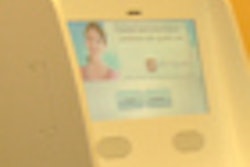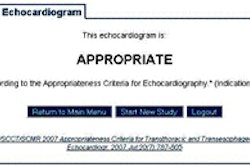Nearly a month ago the U.S. government released the rules that physicians and hospitals must follow to adopt electronic medical records. But for many who are affected by them, how to put those rules into practice -- and therefore qualify for incentive payments -- remains clear as mud.
Staying unclear won't help anyone. But physicians and practices will simply have to persevere as implementation of the rules is clarified, said Brian Baker, senior vice president of Brentwood, TN-based Regents Health Resources, a healthcare consulting firm that provides services to hospitals and physician practices.
Baker outlined some of the unresolved issues of the program and offered ways to deal with them in his talk at the American Healthcare Radiology Administrators (AHRA) annual meeting being held this month in Washington, DC.
"These meaningful use guidelines are a mixed bag," Baker said. "Their implementation is great news and bad news, all at the same time."
Fire, ready, aim
On July 13, the U.S. Centers for Medicare and Medicaid Services (CMS) and the Office of the National Coordinator (ONC) for Health Information Technology issued rules that clarify provisions of the American Recovery and Reinvestment Act of 2009 and the Health Information Technology for Economic and Clinical Health (HITECH) Act. The rules require healthcare providers to show they are "meaningful users" of electronic health record (EHR) systems over a specific timeline before they qualify for incentive payments.
In theory, the program will encourage the use of EHRs and collaboration across the country, develop standards for information exchange, strengthen patient privacy, and lower costs, Baker said. The problem is that there are still quite a few kinks to be worked out.
"It's a bit like, 'Fire, ready, aim,' " he said.
Case in point: Physicians and practices need to adopt certified EHR technology and achieve meaningful use objectives before they can apply for incentive payments. But as of yet there is no certification program in place; CMS plans to establish it in 2012. In the meantime, the agency plans to establish a temporary certification program, Baker said.
"The ONC is in the process now of setting up inspection stations, or organizations that will be approved to temporarily certify EHR systems and modules," he said.
CMS has also established at least 60 regional extension centers designed to help physician practices implement an EHR program, Baker said. But another caution: Certification Commission for Health Information Technology (CCHIT)-certified systems or modules are not automatically ONC certified. Once developed, a certified HIT products list will be posted on an ONC website.
There also currently is no program to create a master patient index, or patient ID, according to Baker, much less to deal with the privacy issues that kind of system could create.
"Think about the development of cell phone technology," he said. "Years ago, there were only analog systems, and when you went from one area to another, the providers had disparate protocols that didn't communicate. Now there are electronic serial numbers for every device, and all of us can go anywhere and the service is seamless. We need something like that for identifying patients. But it also needs to be secure."
Start your engines ... now
Start by registering with the program via the EHR Incentive Programs website, Baker said. Providers must be enrolled in Medicare Fee for Service, Medicare Advantage, or Medicaid; have a National Provider Number; use certified EHR technology; and be enrolled in CMS' Provider Enrollment, Chain, and Ownership System (PECOS).
And be sure to evaluate your practice's current IT resources.
"Find out what your IT vendor's plan is for becoming certified," Baker advised. "If they aren't certified, find another IT vendor. And if you've put together a hodgepodge of systems and software, it's possible that some elements will be certified and others won't."
What's the incentive?
Baker outlined the incentive timeline as set by CMS and ONC:
- January 2011: Registration for the EHR Incentive Programs begins.
- January 2011: For Medicaid providers, states may launch their programs if they so choose.
- April 2011: Attestation for the Medicare EHR Incentive Programs begins.
- May 2011: EHR incentive payments begin.
- November 30, 2011: Last day for eligible hospitals and Critical Access hospitals to register and attest to receive an incentive payment for FY 2011.
- February 29, 2012: Last day for eligible professionals to register and attest to receive an incentive payment for CY 2011.
- 2015: Medicare payment adjustments begin for eligible professionals and eligible hospitals that are not meaningful users of EHR technology.
- 2016: Last year to receive a Medicare EHR incentive payment; last year to initiate participation in Medicaid EHR Incentive Programs.
- 2021: Last year to receive Medicaid EHR incentive payment.
Implementing meaningful use will take perseverance, but it's inevitable, according to Baker.
"Without a doubt, linking payment to quality outcomes or pay-for-performance is now a part of healthcare," he said. "And the adoption of health IT and data collection is not an end in itself, but the future of healthcare."
By Kate Madden Yee
AuntMinnie.com staff writer
August 23, 2010
Related Reading
ABMS to develop 'meaningful use' tools, August 6, 2010
Final meaningful use rules: What radiologists need to know, July 29, 2010
CMS issues final 'meaningful use' EHR rules, July 13, 2010
Copyright © 2010 AuntMinnie.com




















